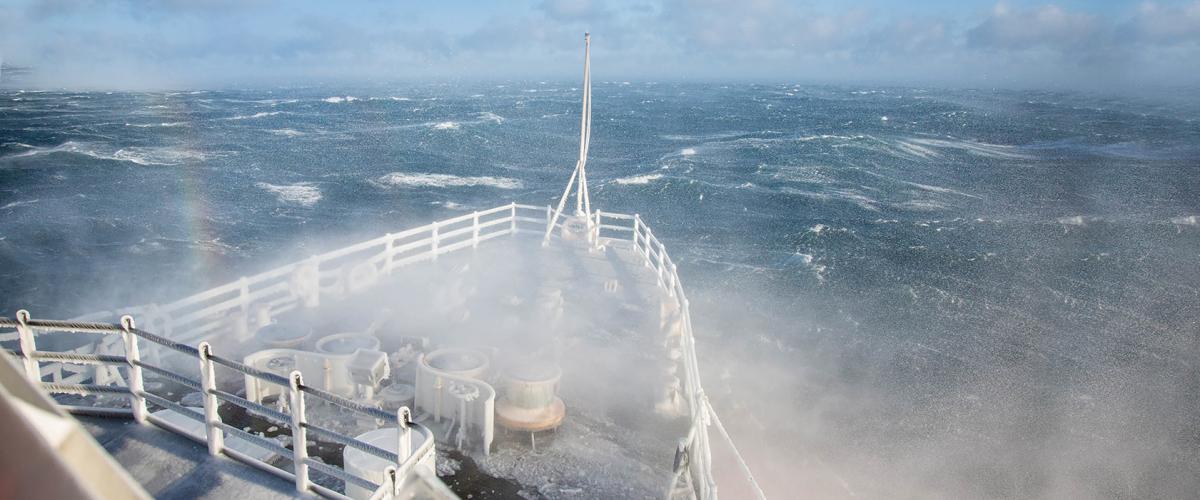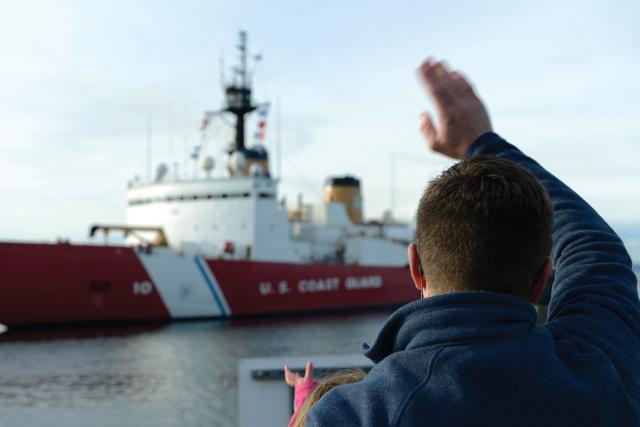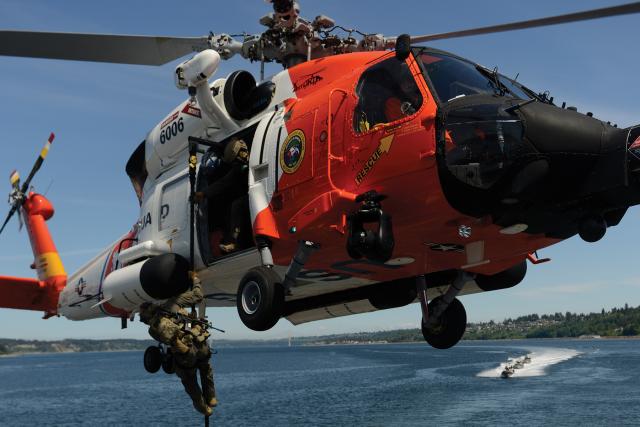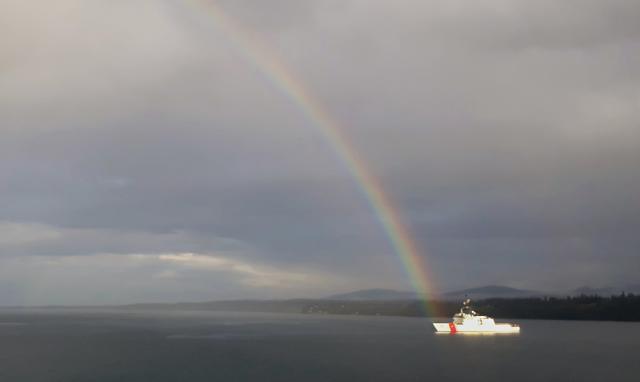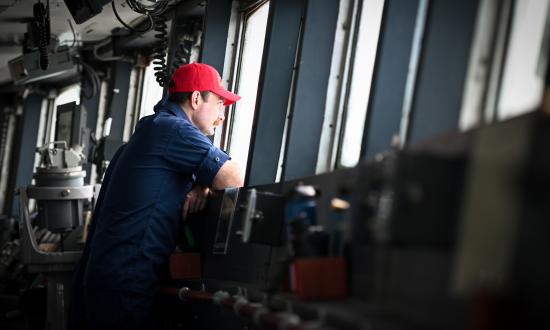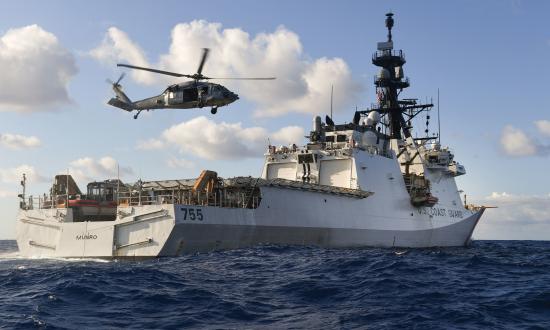A former Coast Guard Command and Operations School chief instructor liked to pause at poignant moments during the course, smile, and ask the class of prospective cutter commanding and executive officers, “Still wanna do it?”
The question was a compass check, an affirmation that everyone in the room understood the magnitude of the challenges that afloat leadership entailed and still looked forward to the opportunity. After a deep dive into command climate, including a review of investigations leading to reliefs for cause: Still wanna do it? Case studies examining collisions and other cutter mishaps from the past several years: Still wanna do it? Finance and administrative responsibilities, connectivity woes, crew fatigue concerns, discipline and conduct trends: Still wanna do it?
In a classroom of soon-to-be cutter commanding and executive officers and officers-in-charge/executive petty officers (the enlisted equivalent), some of whom were attending the course for the fourth or fifth time, the answer was clearly yes. But if the same question were posed to a wider cross section of the Coast Guard workforce, an alarming number would disagree. In fact, for the past several years, the nation’s oldest continuous seagoing service has struggled to entice enough women and men to go to sea.
This year, the Coast Guard took the unprecedented step of offering $40,000 bonuses for qualified lieutenants and lieutenant commanders to return to sea in department head or executive officer billets, with a similar bonus for naval engineers. Not even 40 grand was enough incentive, however, compelling Coast Guard officer personnel management to reduce the afloat experience requirements and resolicit to a wider candidate pool. Coast Guard career sea pay also received its first increase in more than 20 years, but assignment officers still were challenged to fill their 2020 afloat slates with willing—let alone eager—candidates.
Waning interest in sea duty poses a grave threat to the Coast Guard’s operational readiness and organizational well-being. The service needs a pool of talented hard chargers to keep legacy cutters operational and employ modernized cutters to their full potential. The current rate of cutter fleet growth exceeds anything the service has seen since World War II, and manning the future fleet will require increasing the number of Coast Guardsmen serving in afloat assignments by 25 percent, to a total strength of more than 10,000 by 2033. To that end, the service is implementing several initiatives to entice more Coast Guardsmen to pursue afloat assignments, including establishing a Sea Duty Readiness Council that will study trends and recommend policy changes to senior leaders.1 While eagerly awaiting the results of these efforts, however, the fleet should take action now to implement initiatives that will improve sea duty readiness at the unit level.
Cutterman’s Call: Why Are Fewer Answering?
There has never been a time when cuttermen could look to the future fleet with more optimism. After a rocky start, the Coast Guard’s fleet recapitalization project has hit its stride, with national security cutter and fast response cutter programs nearing completion and offshore patrol cutter construction well underway. Congressional approval for polar security cutters heralds the United States’ return to the forefront of polar mission capability and a vital role for the Coast Guard in a key national strategic priority. Modernized cutters far surpass their legacy predecessors in capability and habitability. Why, then, are fewer Coast Guardsmen choosing to go or return to sea? The answer is complex and multifaceted, but from numerous studies, surveys, and discussions, a few key drivers can be identified.2
Work/Life Balance. Sea duty always has been arduous. Long deployments, missed holidays, continuous operations, spartan living conditions, and limited communication with the home front—all are among the challenges well known to cuttermen. Those challenges have not changed for the worse. On the contrary, some (such as crew comforts and shoreside connectivity) have improved. Yet, one critical factor that has gotten notably more difficult is the inport workload. After the lines go over following a long patrol, cutter crews once could look forward to a busy but manageable inport schedule that provided the ability to recharge and reconnect with family and friends before getting back underway.
The increasingly common model today, especially for major cutters, involves massive dockside availabilities featuring several projects that require ship’s force and an army of contractors to work at a furious pace to complete on time. Many shoreside support billets designed to augment optimally manned crews have gone away, shifting more of the maintenance responsibility onto ship’s force. A prevalent sentiment among cutter crews today is that the work/life balance is worse during inport periods than underway, resulting in high burnout rates and reduced morale.
Mission Support Gaps. Related to the above issue, there is a strong notion throughout the fleet that the relationship between cutters and mission support has become inverted, so that cutter needs increasingly give way to accommodate those of support entities. That generates untold frustration when support-side personnel, supply, and logistics hurdles inhibit cutter operational readiness and mission execution. To list a few often-cited examples:
• Members transferring afloat from nonoperational shore-side units frequently arrive with weeks or months of pipeline training still to complete, requiring the cutter to sail shorthanded and prolonging the new member’s shipboard qualification timeline.
• Cutter support provided by base commands varies widely. Some are phenomenal. Others are marginal. Policies and procedures for services such as medical and dental care, weapons and maintenance augmentation teams, and servicing personnel offices also vary, creating an inconsistent standard of care throughout the fleet.
• Throughout the COVID-19 pandemic, many cutter support services diminished or went away entirely as a result of distancing and shelter-in-place measures. Cutters still had to maintain pre-pandemic operational schedules but lacked much of their shoreside support services to perform needed maintenance projects.
• Cutters lack the logistics resources to reliably maintain operational readiness for deployments to areas of responsibility outside the continental United States, such as the eastern Pacific off Central and South America. The difficulty obtaining parts and/or technical assistance often inhibits cutters from making timely repairs to critical systems while deployed.
To be fair, many within the mission support community go above and beyond to deliver the gold standard of service. As an enterprise, however, there is tremendous room for process improvement.
Career Path Competition. The cutter fleet has long served as the cultural center of gravity for the multimission Coast Guard. However, the expansion of other communities, such as response ashore and deployable specialized forces during the post-9/11 reorganization, created a wealth of new operational specialties, and with them a keen competition for talent. The afloat community now vies with high-speed units such as the maritime security response teams, high-tech frontiers such as CG Cyber, and the enviable home life advantages of sector and staff assignments.
For officers, there is also a considerable element of career risk inherent in going afloat. Sea duty provides opportunities to command at almost every level; yet, all know that the sword of Damocles hangs over the commanding officer’s chair. The accountability and scrutiny that accompany command afloat are extreme by necessity, as the frequent headlines announcing commanding officer reliefs for cause attest. With few apparent advantages in career progression compared with other assignments, the risk/reward balance for afloat command does not appear favorable to many junior and midgrade officers.
Given the variety of desirable alternative career paths, are the extrinsic rewards for going afloat worth it? Fewer seem to think so. Sea time is required for advancement in some rates, but cuttermen hold no privileged status at promotion boards or selection panels. There is a common perception at the deckplate level that those assigned to cutters often receive less formal recognition than their counterparts in other communities. The petty officer at a shoreside unit who works normal hours and volunteers here and there on the weekends often will end up with better marks and a higher-level award than the petty officer on a cutter who deploys half the year, stands 1-in-3 duty, and works well past liberty on workdays. To offer a recent data point, of the 18 outstanding Coast Guard active-duty and reserve members who were selected as the Enlisted Petty Officer of the Year for their districts in 2020, none were chosen from the cutter fleet.
There are many more challenges than those described here, and they vary by unit and demographic. Add to those the ongoing impact of the COVID-19 pandemic, which for cutter crews has meant forgoing port call liberty and implementing severe mitigation measures to prevent shipboard contagion, with little change to the operational tempo.
Still wanna do it?
Fortunately, there remains a core nucleus of die-hard cuttermen who emphatically say “Aye!” Then, too, there is a larger group weighing the pros and cons and thinking “I might.” And finally there is a third group, who, for various reasons, know for certain that cutter life is an adventure they dream not of. To start rebuilding seagoing bench strength, leaders in the afloat and cutter support communities should focus on identifying and implementing near-term efforts that will help tilt the balance of the “I might” calculation decisively in favor of “Aye.”
Focus on Controllable Forces
Handling a ship in heavy weather requires making an accurate assessment of the uncontrollable forces acting on the ship and then using the right combination of available controllable forces to maneuver effectively. A similar approach can be applied to the afloat retention problem.
Certain decision factors, such as maintenance requirements, support gaps, incentive pay, and operational tempo, cannot be readily influenced from inside the lifelines. But that does not mean the fleet needs to lie beam-to in the trough waiting for solutions from headquarters. For those factors that can be influenced now, leaders should set a course and make best speed.
Following are a few high-impact sea duty readiness factors that can be influenced directly or indirectly through unit-level initiatives. Pay grade meetings, formal and informal climate surveys, open-forum discussions, and various other sources of crew input will identify others specific to each unit.
Shipboard Climate. Once, intangible measures such as morale and job satisfaction were a distant concern behind inspection results and operational metrics. Toxic leaders who got the job done often were rewarded and promoted. Some well-established cutter traditions contained elements of hazing that were accepted and even encouraged. Fortunately, that aspect of cutter culture has evolved. Coast Guard senior leaders have issued clear guidance regarding climate expectations and provided a variety of tools to help commands identify and address crew concerns.
Despite the increased focus on climate, however, endemic problems remain, and poor climates contribute prominently to negative perceptions of sea duty. Cultivating a positive climate that can weather the adversity currently faced throughout the cutter fleet is no small task, but few efforts could have a more profound impact on sea duty readiness.
Climate is an elusive thing to capture or quantify, as it is more easily sensed than defined. Although sometimes also called “command climate,” it is not within the commanding officer’s or any one individual’s power to control directly. Rather, establishing and maintaining a positive climate takes a unified effort from the deckplates to the cabin, and the most successful climate improvement efforts tend to include a broad range of participants from different departments, pay grades, and demographics.
Professional Development. A successful professional development program produces eminently qualified crew members and instills pride in being a professional mariner. That outcome has a twofold impact on sea duty readiness: It increases overall proficiency across the cutter fleet, and it provides a powerful intrinsic motivator for members to continue on the afloat career path from apprenticeship to mastery.
Cutters are arguably the Coast Guard’s best platforms for honing leadership prowess and professional skills. Major cutters are especially well configured for the role, because they wield three key developmental pillars: a wardroom, a chief’s mess, and ample opportunity for hands-on operational experience. But, as many can attest, merely having those resources available does not automatically create an effective professional development program. It takes a concerted investment of time and energy to teach, mentor, guide, and inspire, which must be carved out from an already full plate of operational and administrative demands.
Providing opportunities for professional growth also requires a willingness to assume risk. Often that means delegating increasing amounts of responsibility to more junior personnel, placing less experienced crew members in key positions that may be outside their comfort zones, and providing enough latitude for people to make minor errors. Those risks must be carefully managed but taken nonetheless. An old afloat leadership adage goes “Allow people to make mistakes above the waterline.” That expression is not entirely fit to always apply literally, but it does nicely illustrate the balance between too much and too little risk tolerance.
Identity and Pride. Many who continuously seek sea duty assignments do not do it for sea pay bonuses, recognition, or other extrinsic enticements. They do it because they believe in the mission, enjoy the challenge and camaraderie, and take pride in being cuttermen. At some point early on, someone or something ignited a spark that kept them going back despite the difficulties and the sacrifices that sea duty demands. Not everyone who goes to sea will fall in love with it and want to do it for an entire career. But the more sparks an afloat unit produces, the more will land and inspire crew members to choose another cutter assignment in the future.
The onus is on the current generation of seasoned cuttermen who carry that spark to pass it on. As sentinels of the Coast Guard’s oldest traditions, cuttermen have to maintain the customs, ceremonies, and lore handed down the Long Blue Line for more than two centuries. In some cases, that also means adapting them to better align with Coast Guard core values. For those whose first sea tour is on a new, modernized cutter, the old salts have to instill the cutterman can-do spirit that was forged by generations of accomplishing difficult missions with aging assets and limited resources. Above all, cuttermen have to demonstrate enthusiasm and pride for the seagoing profession, even when the day-to-day frustrations make that difficult.
Heed the Signs of Heavy Strain
A line under heavy strain is in danger of parting—a fitting analogy for the mind-set of many currently serving in the cutter fleet. No metric illustrates that point more clearly than the number of Coast Guardsmen who are parting ways with the afloat community and not returning. Unit-level efforts can ease some of the strain, and there is no doubt that many cuttermen already are seizing the initiative to make a positive impact. However, it will take a much more comprehensive effort to resolve some of the underlying issues contributing to the decline in sea duty readiness. Without significant intervention by Coast Guard senior leaders to get after the organization-level problems, too few will “still wanna do it” to man, maintain, and operate the future fleet.
1. See ALCOAST 016/21, “Sea Duty Readiness.”
2. See Jennie W. Wenger, Maria C. Lytell, Kimberly Curry Hall, and Michael L. Hansen, Balancing Quality of Life with Mission Requirements: An Analysis of Personnel Tempo on U.S. Coast Guard Major Cutters (Homeland Security Operational Analysis Center operated by the RAND Corporation, 2019).



